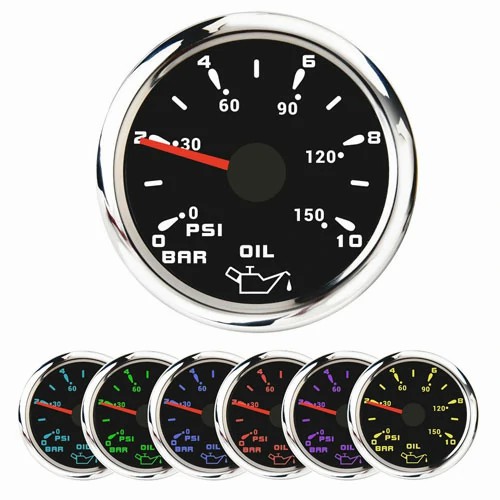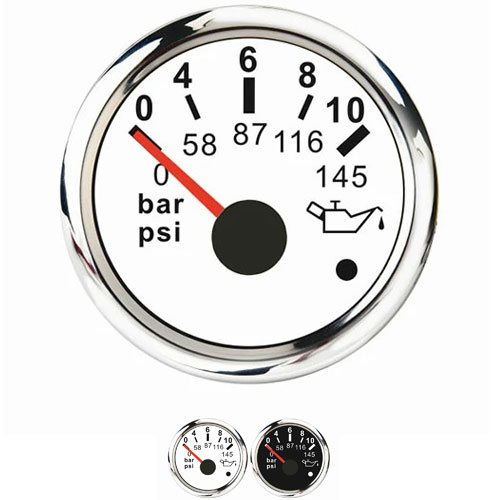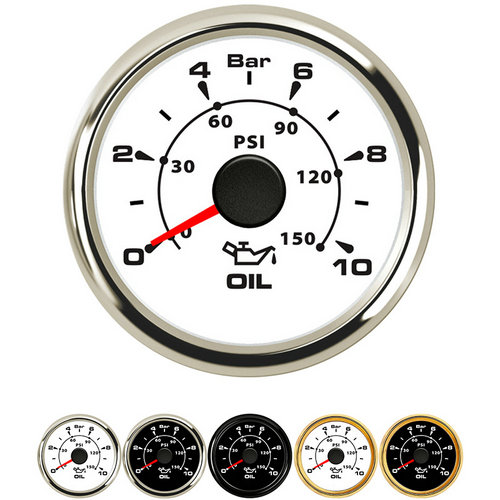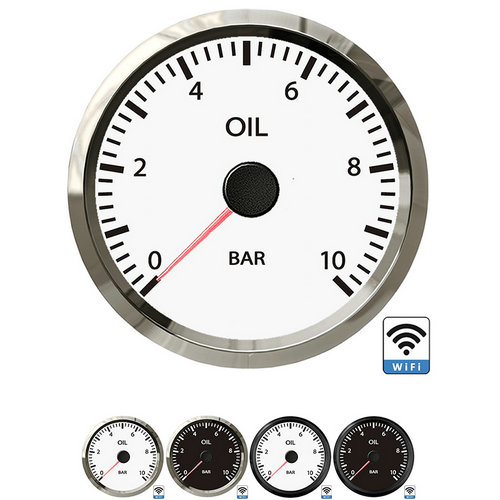why does my oil pressure gauge go up and down
1. When the engine is running to detect the oil pressure, if the pointer of the oil pressure gauge swings left and right, it means that the oil pressure of the main oil circuit is unstable. The unstable oil pressure is mainly caused by the following reasons: the oil pump sucks air: the seal is damaged, the oil quantity is insufficient or the oil level is too low. Insufficient oil suction of the oil pump: the filter screen of the oil collector is blocked by impurities, or the filter screen cannot be completely immersed in the oil due to incorrect installation, and the viscosity of the oil is too high. will lead to insufficient oil absorption of the oil pump, short oil supply time, and unstable oil pressure; the filter should be checked and cleaned, and the oil should be replaced. The oil return valve cannot work sensitively: the oil return valve is also called the oil pressure regulating valve. If its spring is severely rusted or the valve seat is partially worn, the spring is broken or severely deformed, the valve core will get stuck and cannot switch sensitively with pressure changes. The oil return valve can be removed for cleaning and rust removal, and the spring can be replaced if necessary.
2. Under normal circumstances, the opening pressure of the oil return valve has been debugged when the vehicle leaves the factory. Under normal circumstances, it should not be disassembled or adjusted. The oil pressure gauge is faulty or the oil circuit to the pressure gauge is blocked. Loosen the nuts or bolts connecting the oil pipe to the oil pressure gauge (the other end is connected to the main oil passage), respectively. If the oil pressure is high, the pressure gauge is faulty or the oil line to the oil pressure gauge is clogged. The amount of oil is insufficient, the oil has deteriorated, or there is water in the oil. Regularly check the scale of the oil storage dipstick in the oil pan, and add enough oil as required; check the cooperation between the piston ring and the cylinder liner, and repair it when the wear is serious. The brand of oil is wrong, the viscosity is low, and the oil is too thin. Change the oil with new oil that meets specifications. The diesel engine is overloaded for a long time, making the oil temperature too high and too thin. Reduce diesel engine load and do not allow long-term overload work. The oil is too dirty and will deteriorate if used for too long, causing blockage of the oil suction pan filter or oil circuit. Change the oil with new oil and clean the filter and oil passages.

3. After the oil pump is worn, the internal leakage of the oil pump will increase, the oil volume in the pump will decrease, or the oil pump paper pad will be damaged and oil leakage will occur. This can be compensated by reducing the thickness of the oil pump end cover gasket. If the pump oil is still insufficient, repair or replace worn parts and damaged gaskets. Check that the pressure limiting valve spring is not too soft and the valve is not too worn. If the valve is properly worn, check for insufficient spring elasticity. The springs can be removed and inspected on the test bench. Generally, random adjustment is not allowed. The pressure limiting valve ball and valve seat are worn, the seal is loose, and oil leaks, resulting in reduced sealing performance. When the valve seat is lightly worn, the inclined surface can be polished with valve sand. The ball valve can also be placed on the valve seat with a steel ball, supported by a copper rod, and tapped a few times to make the two tightly combined.
 English
English 






Get a Quote / Info